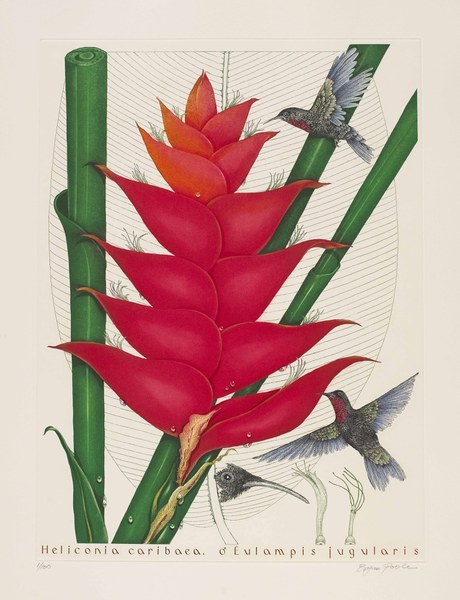Heliconias rank among the great botanical beauties of the natural world. Due to their sculptural form and vibrant colors, they have been widely distributed in ornamental gardens and the horticulture trade over the centuries. Yet until recently, these iconic tropical plants were only poorly known by scientists. Smithsonian botanist W. John Kress has spent over forty years studying heliconias. His talk recounts a telling example of the interaction of science and art beginning with his discovery of a new heliconia, based on a painting by botanical artist Margaret Mee. Kress then analyzes how, over the last few decades, both field observations and controlled experiments by botanists and ecologists have produced a wealth of new information about heliconias and their close interactions with their pollinators, especially hummingbirds. The beauty of these plants drew him to an appreciation of the artistic interpretation of nature that eventually led to an exhibition of botanical art at the Royal Botanic Gardens, Kew. These fascinating discoveries illuminate the sophistication of plant–animal interactions, expand our understanding of evolution, and invite us to reconsider the astonishing capacity of plants to affect our environments.
Dr. W. John Kress is distinguished scientist and curator emeritus at the Smithsonian’s National Museum of Natural History and cochair of the Earth BioGenome Project, an international effort to generate complete genomes for all species of plants, animals, and fungi on the planet. He was curator of botany for over thirty years and formerly served as the interim undersecretary for science at the Smithsonian and director of science in the Grand Challenges Consortia. Dr. Kress received his education at Harvard University (BA, 1975) and Duke University (PhD, 1981), where he studied tropical biology, ethnobotany, evolution, and ecology. He is a taxonomic specialist on the tropical Zingiberales and his current research is focused on biodiversity genomics, conservation, and the Anthropocene. Among his over two hundred scientific and popular papers are his books Plant Conservation: A Natural History Approach, The Weeping Goldsmith, The Art of Plant Evolution, and The Ornaments of Life: Coevolution and Conservation in the Tropics. His most recent book on climate change and society is Living in the Anthropocene: Earth in the Age of Humans. He is a fellow of the American Association for the Advancement of Science and is currently visiting scholar at Dartmouth College and the Arnold Arboretum of Harvard University. He lives in Dorset, Vermont.
